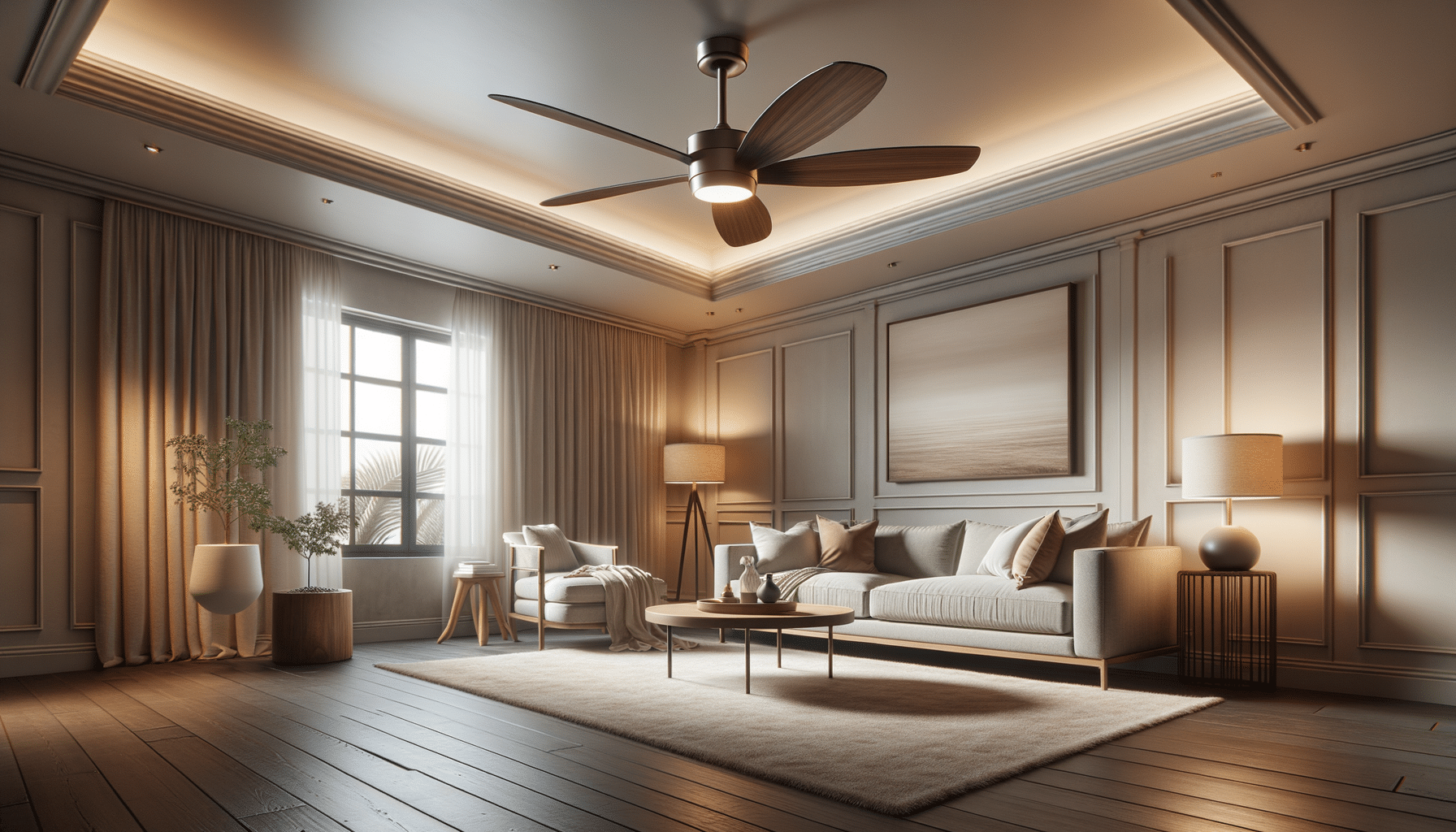
Exploring the Charm and Efficiency of Ceiling Fans
Introduction to Ceiling Fans
Ceiling fans have been a staple in homes and businesses for over a century, offering an effective and stylish way to circulate air and maintain comfort in a variety of settings. They are an energy-efficient alternative to air conditioning, providing a cooling effect through the simple yet effective mechanism of air movement. Beyond their functional benefits, ceiling fans also add aesthetic value to a room, with designs ranging from minimalist to ornate, catering to diverse tastes and interior styles.
The Mechanics of Ceiling Fans
Understanding how ceiling fans work is key to appreciating their efficiency. At the core of their operation is the motor, which drives the blades to rotate, creating a downdraft that cools the room by evaporating moisture from the skin. The angle and pitch of the blades play a crucial role in determining the efficiency of air circulation. Most modern ceiling fans come with a reversible motor, allowing users to switch the direction of the blades to promote warm air circulation during colder months.
Key components of a ceiling fan include:
- Motor: Powers the fan blades and is responsible for the speed and direction of rotation.
- Blades: Typically three to five blades that are angled to move air efficiently.
- Mounting System: Ensures the fan is securely attached to the ceiling, often with options for different ceiling heights.
- Lighting Kit: Many ceiling fans come with integrated lighting, adding functionality and aesthetic appeal.
Energy Efficiency and Cost Savings
One of the most compelling arguments for using ceiling fans is their energy efficiency. They consume significantly less power than air conditioning units. By using a ceiling fan in conjunction with an air conditioner, homeowners can raise the thermostat setting by about 4 degrees Fahrenheit without reducing comfort, which can result in considerable energy savings. Additionally, ceiling fans are an eco-friendly option, reducing the overall carbon footprint of a household.
When selecting a ceiling fan for energy efficiency, consider the following:
- Energy Star Rating: Fans with this certification are designed to be 60% more efficient than conventional models.
- Blade Pitch: A higher blade pitch increases air movement efficiency.
- Size: Choosing the right size for the room ensures optimal performance and efficiency.
Design and Aesthetic Appeal
Ceiling fans are not only functional but also serve as a decorative element in a room. They come in a plethora of designs, materials, and finishes, allowing them to complement any décor style. From sleek, modern designs with metal finishes to traditional wooden blades with ornate detailing, there’s a ceiling fan to match every aesthetic preference.
Popular design elements include:
- Contemporary: Minimalist designs with clean lines and neutral colors.
- Traditional: Classic styles with wood finishes and intricate details.
- Rustic: Natural materials and earthy tones that fit well in farmhouse or country-style interiors.
- Industrial: Bold designs with metallic finishes and exposed hardware.
Installation and Maintenance Tips
Proper installation and maintenance are crucial for the optimal performance and longevity of ceiling fans. While many models come with detailed instructions for DIY installation, it’s often advisable to hire a professional, especially for fans with complex wiring or those installed on high ceilings.
Maintenance tips to keep your ceiling fan running smoothly include:
- Regularly dusting the blades to prevent build-up that can affect balance and efficiency.
- Checking the balance and making adjustments as needed to reduce wobbling and noise.
- Inspecting the fan’s hardware and tightening any loose screws or connections.
- Lubricating the motor if required by the manufacturer.
Conclusion: The Value of Ceiling Fans
Ceiling fans are a versatile and valuable addition to any space, offering both aesthetic and practical benefits. Their ability to enhance comfort while reducing energy costs makes them a smart investment for homeowners and businesses alike. By understanding the mechanics, energy efficiency, design options, and maintenance needs of ceiling fans, consumers can make informed decisions that enhance their living or working environments. Whether for a cozy living room or a bustling office, ceiling fans remain an enduring solution for comfort and style.


